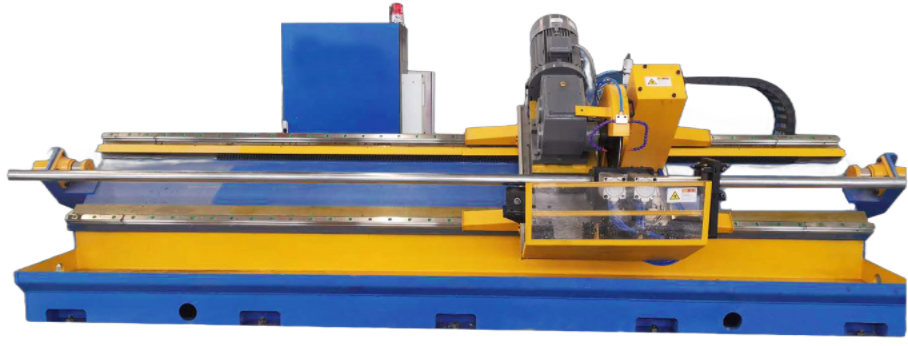stainless steel pipe mold
Stainless Steel Pipe Mold Technological Advances and Applications
Stainless steel pipes have become increasingly vital in a multitude of industries, thanks to their exceptional durability, corrosion resistance, and aesthetic appeal. The process involved in crafting these pipes is complex, with the mold being a key component in determining the quality and precision of the final product. Stainless steel pipe molds are engineered to meet rigorous standards, facilitating the mass production of pipes used in plumbing, construction, automotive, aerospace, and various other applications.
The Importance of Stainless Steel Pipe Molds
Molds are critical in shaping the molten metal into specific forms. In the case of stainless steel pipes, a high-quality mold ensures that the pipes are uniform in shape, thickness, and size. The manufacturing of these molds must take into account the temperature resistance and durability, considering that the molding process involves high temperatures that can affect the integrity of the mold material.
Advanced mold-making technology allows manufacturers to create intricate designs that not only enhance the aesthetic attributes of the pipes but also ensure optimal functionality. Precision is key; any discrepancies in the mold could lead to defects in the pipes, resulting in significant costs and safety risks down the line. Therefore, investing in high-quality stainless steel pipe molds is imperative for any manufacturer looking to maintain a competitive edge.
Innovations in Mold Design and Production
Recent advancements in technology have revolutionized the way stainless steel pipe molds are designed and produced. Computer-aided design (CAD) tools enable engineers to create highly detailed models of molds, ensuring a perfect fit for the intended pipe specifications. Additionally, 3D printing technology is making waves in the mold-making industry, allowing for rapid prototyping and the production of complex shapes that would be difficult to achieve using traditional methods.
Another innovation is the use of specialized coatings on molds. These coatings can enhance the mold's performance by increasing its lifespan and reducing friction during the molding process. Such enhancements lead to a significant reduction in maintenance costs and downtime, benefitting manufacturers in terms of productivity and profitability.
Types of Molds Used for Stainless Steel Pipes
There are several types of molds used in the production of stainless steel pipes, including
stainless steel pipe mold

1. Extrusion Molds Used for shaping materials by forcing them through a die. This method is popular for producing long sections of pipe.
2. Casting Molds Involves pouring molten stainless steel into a mold to form pipes. This method allows for complex shapes but requires precise temperature control to avoid defects.
3. Stamping Molds Commonly used for creating specific features or designs on the pipes, such as grooves or markings.
4. Blow Molding Utilized for hollow pieces; air is blown into a heated tube of material which then takes the shape of the mold.
Applications of Stainless Steel Pipes
Stainless steel pipes are ubiquitous across a range of sectors. In construction, they are used for both structural and decorative purposes. The automotive industry relies on stainless steel pipes for exhaust systems, fuel lines, and structural components due to their ability to withstand harsh environments. In the aerospace sector, they are used for critical systems where strength and weight are major considerations.
Moreover, they also play a vital role in the pharmaceutical and food industries, where hygiene and corrosion resistance are paramount. Stainless steel pipes are often used in sanitary applications, ensuring that they do not produce contamination during transportation.
Conclusion
The significance of stainless steel pipe molds in the pipe manufacturing sector cannot be overstated. By utilizing advanced technologies and materials, manufacturers can create high-quality molds that facilitate the efficient production of stainless steel pipes. With their application across multiple industries, the demand for stainless steel pipes continues to grow, underscoring the importance of innovation in mold design and manufacturing processes. As the industry evolves, the continual improvement and adaptation of stainless steel pipe molds will be essential in meeting the future demands of diverse markets.
-
High Frequency Straight Seam Welded Pipe Production Line-BzZhou Xinghua Machinery Equipment Manufacturing Co., LTD.|line pipe steel&welded gas pipeNewsJul.30,2025
-
High Frequency Straight Seam Welded Pipe Production Line-BzZhou Xinghua Machinery Equipment Manufacturing Co., LTD.|High Precision&Automated SolutionsNewsJul.30,2025
-
High Frequency Straight Seam Welded Pipe Production Line - BzZhou Xinghua Machinery Equipment Manufacturing Co., Ltd.NewsJul.30,2025
-
High Frequency Straight Seam Welded Pipe Production Line-BzZhou Xinghua Machinery Equipment Manufacturing Co., LTD.|Precision Welding, High EfficiencyNewsJul.30,2025
-
High Frequency Straight Seam Welded Pipe Production Line|BzZhou Xinghua|Precision Welding&EfficiencyNewsJul.30,2025
-
High Frequency Straight Seam Welded Pipe Production Line - BzZhou Xinghua|Precision Engineering&EfficiencyNewsJul.30,2025


